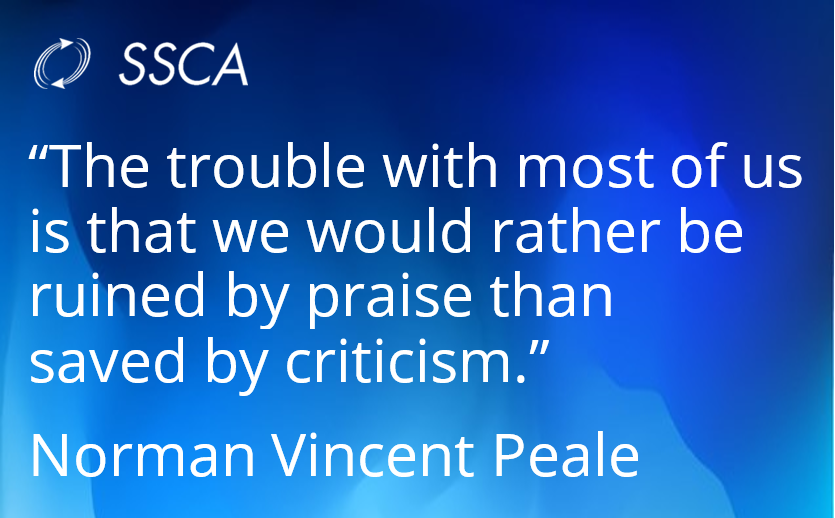By Keith Merron
Recently, I have begun working with three new client organizations; each wants to become more effective as a business system. As usual, I am starting at the top of each organization and gathering information through surveys and interviews designed to improve our shared understanding of how it operates.
I am reminded of past instances when I have shared my findings from such inquiries with organizational leaders and found them to be resistant to the information. Sometimes the leaders are surprised or defensive, often rationalizing away what they consider negative feedback. They seem to withdraw into themselves and ask: Why didn’t I know this earlier? Is the picture really this bad? Why haven’t people told me the truth?
To address such questions, one must see that feedback is often a mixed blessing. While it has power and potential for improving performance, it can also be very threatening, triggering personal resistance to both the message and the messenger. By recognizing this dynamic, we can make optimal use of the instructive elements of feedback while minimizing unintended repercussions.
The Blessings of Feedback
All organizations are human systems. They have goals and are organized to achieve those goals. In essence, the purpose of feedback is to help the organizational system to discover whether and to what extent it is succeeding in meeting its goals. Feedback helps the entire system achieve higher standards – one of the critical elements of an effective organizational climate. Without feedback, the system cannot know how well it is meeting its targets and standards, nor can it correct appropriately. Let me explain by way of an example.
I am writing this article on a plan headed from Denver to San Francisco. The pilot is clear on our goal (I hope!), namely to get safely to San Francisco, on time. My pilot has a bunch of dials in front of him, designed to tell him how well the plane is doing. (I was once told by a pilot that rarely, if ever, is a plane exactly on course. In fact, most of the time it is slightly off-course.) The dials are feedback mechanisms that enable the pilot to regularly correct, get back on course, and eventually arrive at the planned destination.
Likewise, the appropriate purpose of feedback in business is to help the business learn, adapt, modify, and self-correct. Nothing more, nothing less. In this light, feedback is an enormously valuable tool for organizational leaders. Indeed, that part of us that is driven toward achievement and superior performance really wants and needs feedback. Our challenge, as leaders, is to consistently honor its purpose, and structure our feedback processes accordingly.
Why do so many leaders resist corrective feedback?
The Threat of Feedback
Although feedback is essential for helping guide organizations, we still tend to resist it – particularly when the feedback indicates our organization (or, still worse, its leader) is off-course.
Why do so many of us resist corrective feedback? Because, like most human beings, we want to believe we are already effective!
In fact, in reaching our position, we have learned that a strong leader must have a strong belief in his or her capabilities. Without such a self-belief, we would likely crumble in the face of significant obstacles and conflict.
Our self-image craves the feeling of being in control and in charge. We have a strong, vested interest in believing we are fully competent and capable. In defense of our self-image, we seek to defend the rightness of our views, beliefs, and attitudes at all costs. When we get feedback that says we need to course-correct, our self-image remains tenacious: We do not want to hear criticism because it flies in the face of our hard-won belief that we are performers, achievers, and are doing just fine …
In effect, corrective feedback is experienced as a threat to a leader’s self-image so it is natural to resist seeking feedback as well as receiving it. Unfortunately, while this tendency protects our self-image, it works 180 degrees against our ability to learn, grow, and improve.
What To Do
It is understandable that feedback delivered with any kind of attached hidden agenda or emotional sting will be still harder to receive, and will actually undermine the fundamental purpose of feedback. The keys to applying feedback as an effective leadership tool include the following:
- Ask for – and offer – it early. Unless feedback is offered early, whatever problem it indicates will build, becoming more entrenched and harder to resolve. At that point, the feedback will likely carry more judgment and an emotional sting.
- Exchange it with the purpose to help, not hurt. When receiving feedback, remind yourself that its intent is to help you self-correct and succeed. When delivering it, remind the other person that your purpose is to offer information that is of value to them in their efforts to perform and achieve.
- Communicate positive regard for the other person. Remind the person on the receiving end that you care about and respect them and that it is from this perspective that you offer your feedback.
- Establish the exchange of feedback as an expectation and norm. Regular use makes feedback less of an “event,” thereby eroding the tendency toward an emotional response. When encouraged, the consistent use of feedback becomes a habit – one of the few habits that actually promote awareness, flexibility, and competitive responsiveness!
- Follow basic guidelines for giving effective feedback.
- Be sure the person is open to the feedback in the moment you are planning to deliver it.
- Limit your feedback to those things that the person (or team or organization) can change.
- Own your feedback. Use “I” language.
- Focus on the behavior, not the person.”
- Be direct; don’t skirt the issue.
- Avoid judgmental or absolute terms.
- Offer specific observations and clear examples.
Use feedback as a guide, not a hammer. Get it often so you can self-correct. And, fundamentally, treat it for what it is: information that helps the system know when it is on course and when it is off. Nothing more, nothing less.

